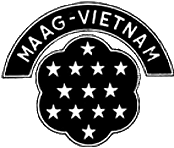UNANSWERED QUESTIONS:
First, I have not reviewed any OSI reports concerning the 1 July 1965 Đà Nàng AB sapper attack and Airman Handy's involvement. If that report exists, it should and may very well answer some of the below questions. If these questions are answered or addressed within the report.
The following is a list of questions raised concerning any OSI investigation, and findings and procedures when interviewing Airman Handy:
- Did OSI conduct an investigation concerning SSgt Jensen's death?
- Does an OSI Report concerning the Đà Nàng AB sapper attack of 1 July 1965 exist? If so, does an existing OSI report or inquiry merit OSI internal review?
- Did OSI initially suspect friendly-fire may have caused SSgt Jensen’s death?
- Did OSI have the expertise to investigate a homicide? And if so, were sound investigative procedures followed?
- If OSI suspected Airman Handy of wrong doing, was he advised of Art 31 (Miranda) UCMJ, which would apply if they suspected a him of a crime?
- Was OSI's report, if any, reviewed by a superior? If not, why not? [MSgt Mike Bush and SSgt Jackie Kays (ret.USAF and detective) apparently also have issues with OSI's resulting actions neither exonerating nor charging him with a violation.]
- Was Airman Handy’s account deemed credible by OSI after it was verified by the crew Captain, Calcutt and the VC POW who stated Handy's firing broke off the attack? If Handy committed a crime he would have been held accountable. However, if his actions were valorous, as they seem, should he be vindicated and awarded a medal?
- Is it desirable for the Air Force to open a "Cold Case" concerning 1 July 1965, and is it possible to correct erroneous facts? Is it possible to make the findings and conclusions known from an official document? And if Airman Handy, or members of the SAT merit any recognition or award(s), could that still occur in the interest of justice and to correct any oversight?
- Was SSgt Jensen’s body x-rayed? Was an autopsy performed, and if so, were AK-47 or M16 fragments discovered, or was the weapon that caused his death determined?
- SSgt Jensen fired three shots from “30 yards” away with a .38 at night, while under attack and hit two VC. Who were the witnesses reporting SSgt Jensen fired three rounds and "... two of the NVA soldiers went down"? (MSgt Mike Bush later checked SSgt Jensen’s .38, and determined only three rounds were fired.)
- Why did SSgt Jensen leave his M16 at CSC when he made the coffee run? Was that an individual unique act and oversight or indicative of a lax enforcement of security procedures, and possibly a failure in leadership?
- How far away were Sergeant Bush and Airman Winn when SSgt Jensen was killed? Was Airman Handy firing by himself at that time?
- Airman Handy related the SAT team was turned back twice by enemy fire before perseverance resulted in reaching him on the third attempt.
- Why was the SAT only were armed only with .38s and M16s at that time? Why weren't they better armed? Were alternate weapons available to them? Did the SAT have additional ammo with them?
- Why weren’t all the posts and vehicles radio equipped?
- Why were Air Police performing combat role duties they were not trained for? Sergeant Bush makes a very good analysis, when he mentions the APs were neither trained nor equipped to do the job. The AF senior leadership still had troops in Vietnam in a SAC 205-5 mode of security.
- Was USMC del Rosario correct when he refers to Marine Officers being armed with .38s? Did Marines ever have .38s in their inventory? Is it possible Marines would have .38s acquired from the AF?
- Why was Airman Handy told he was being medevac (implying he would receive follow up counseling), but merely flown back to his PCS base?
|
